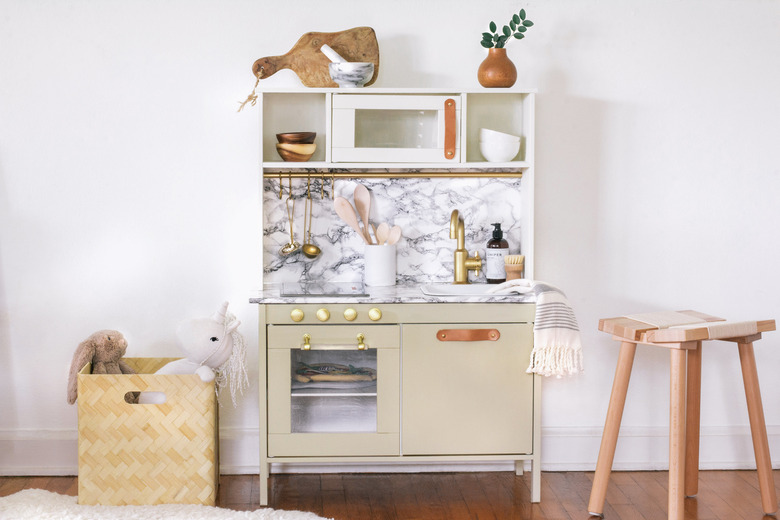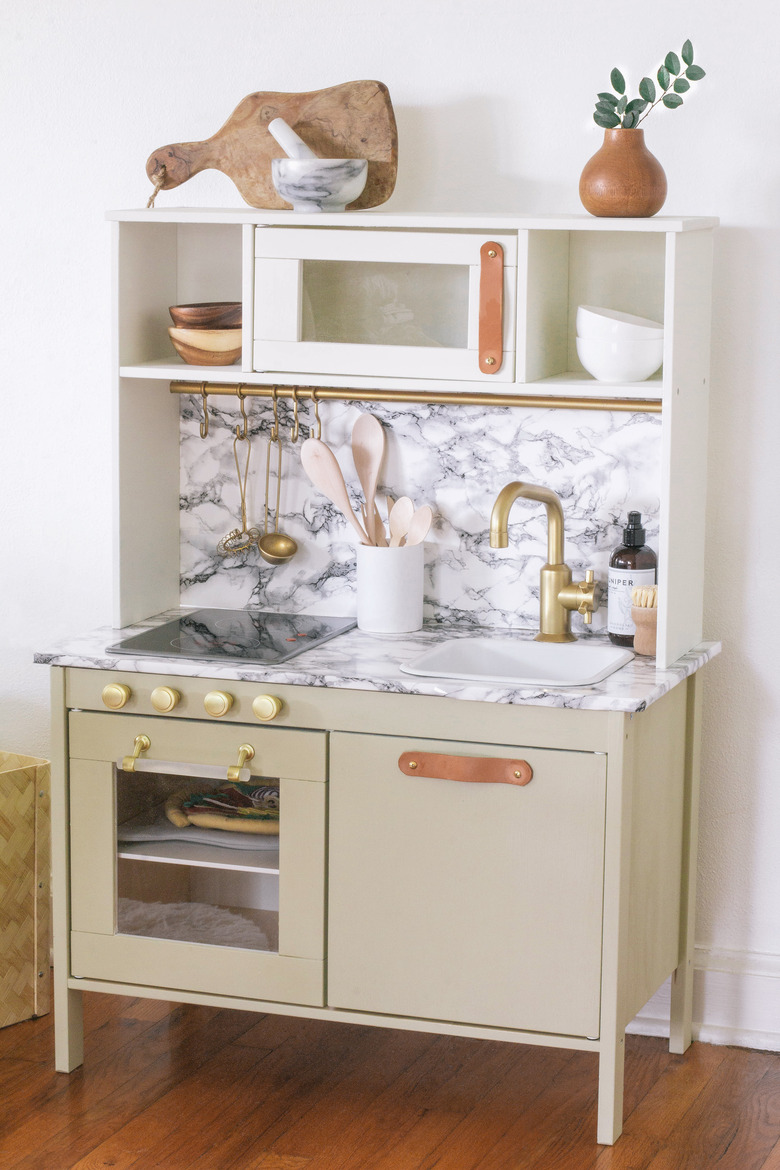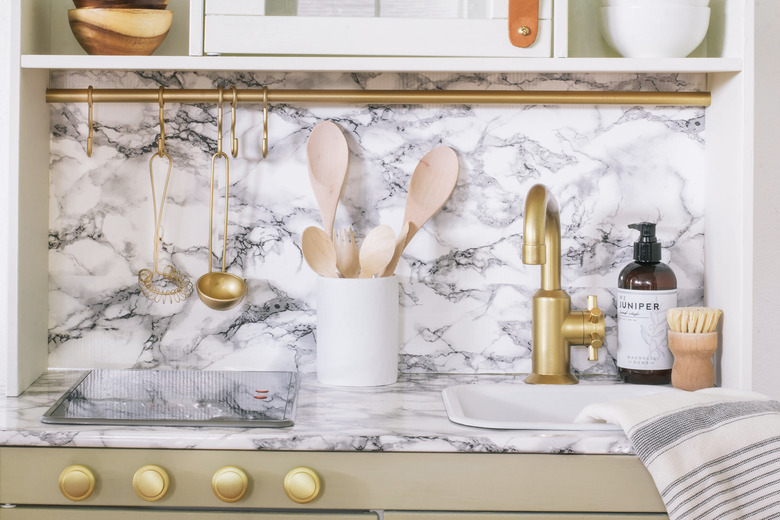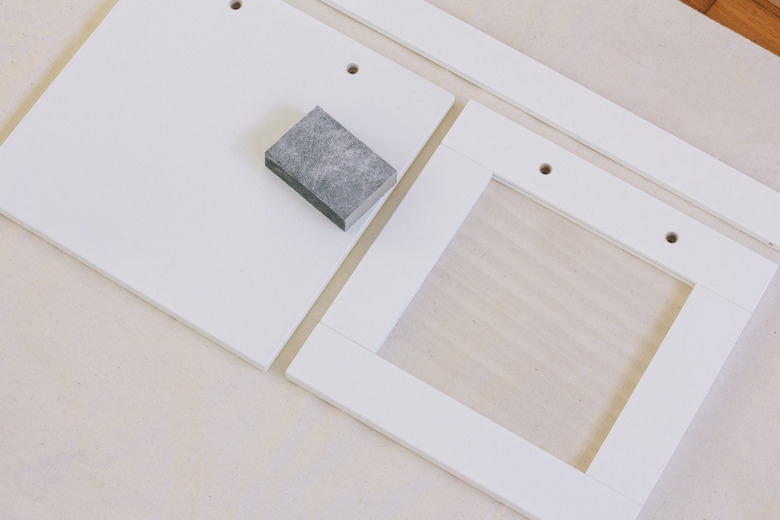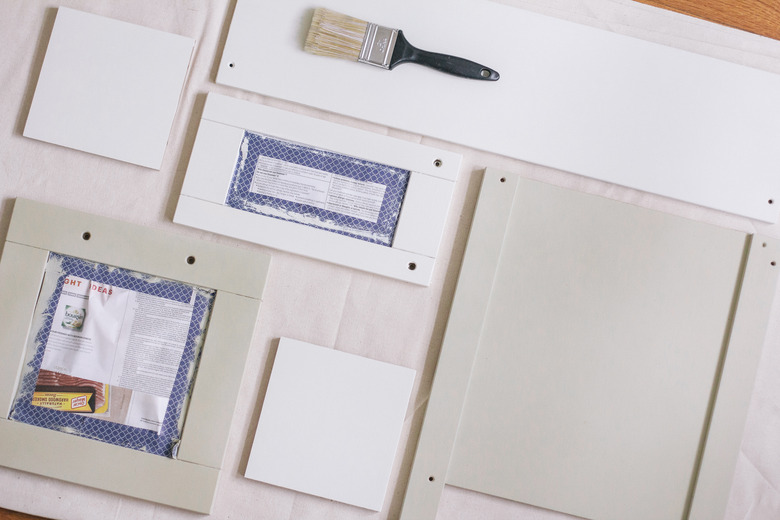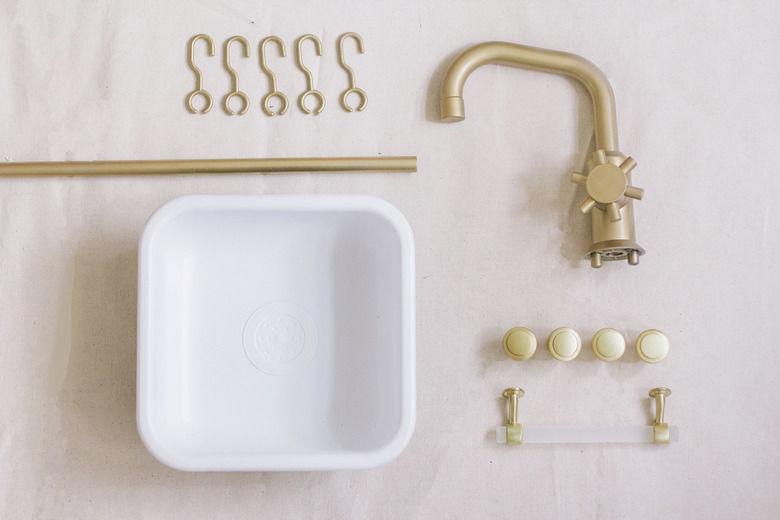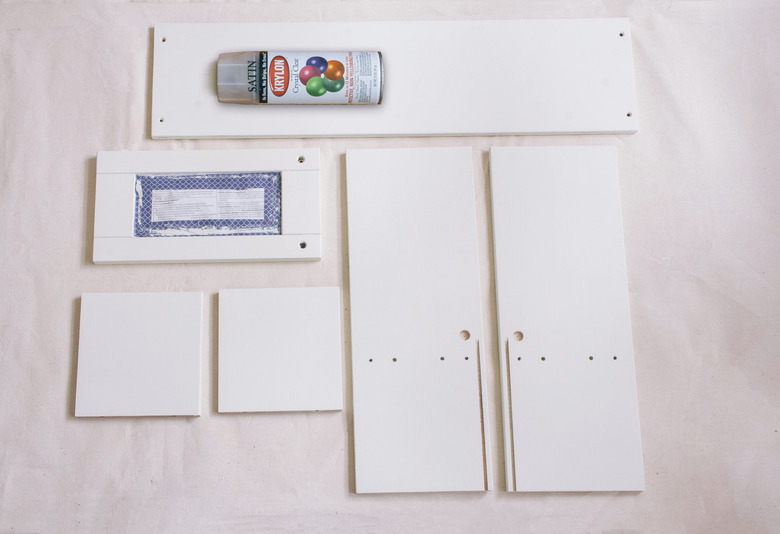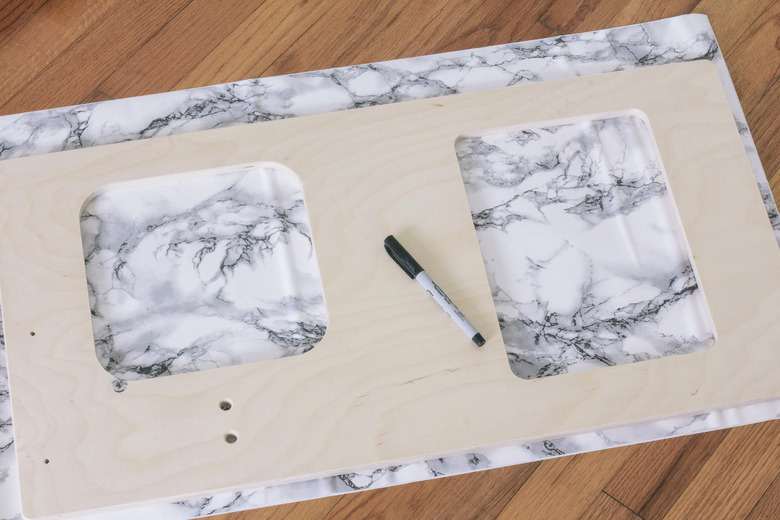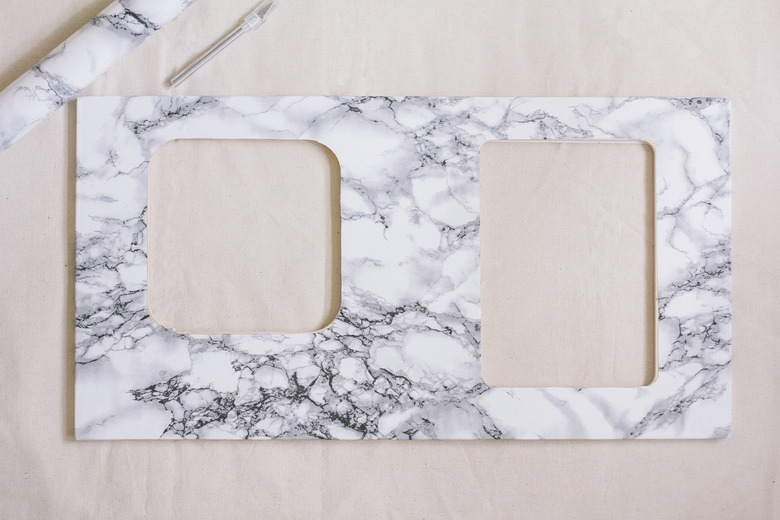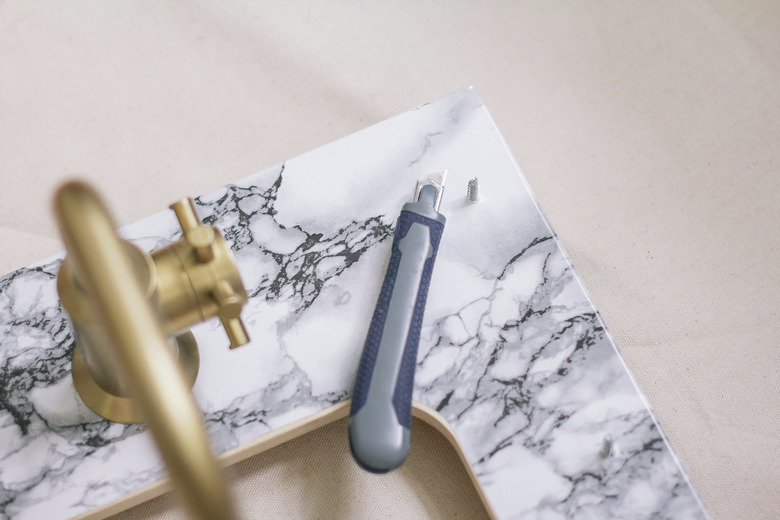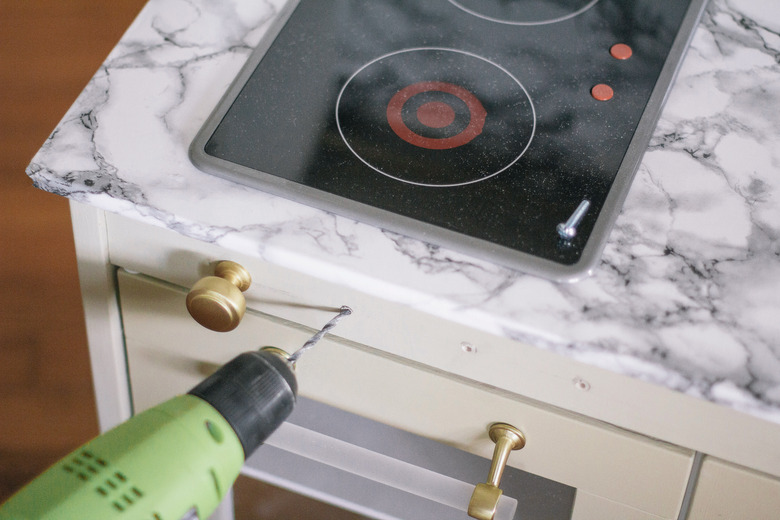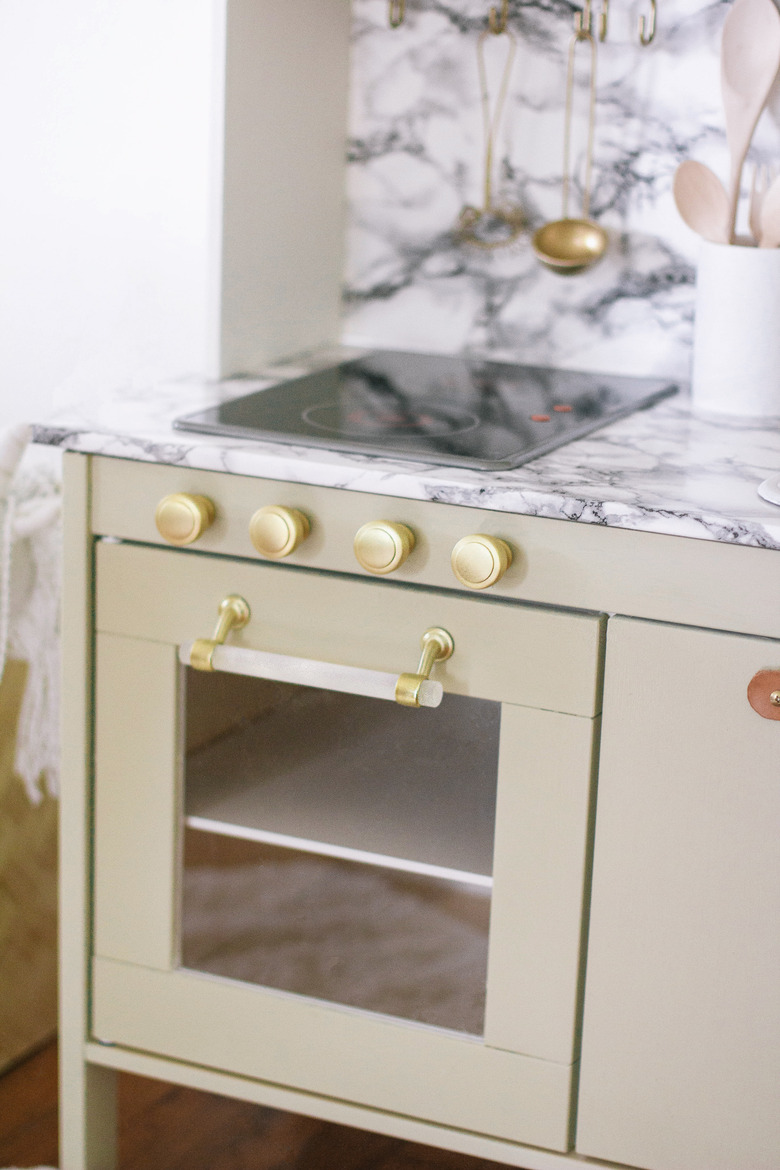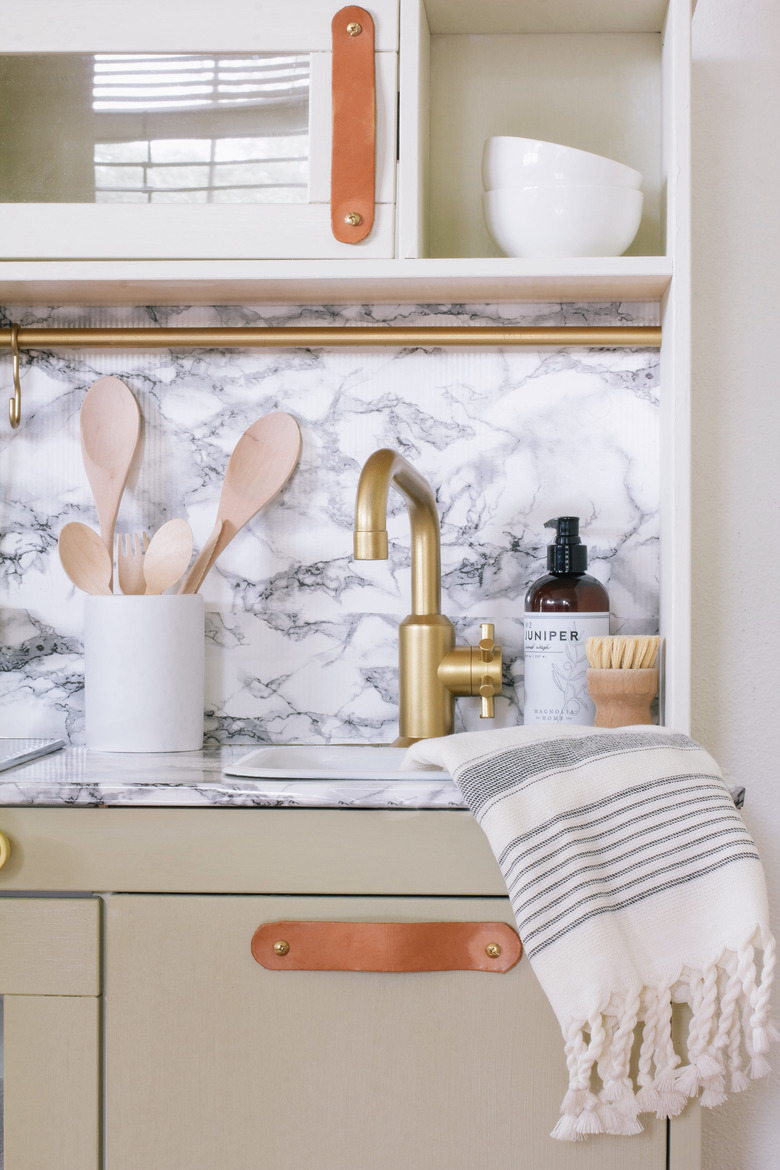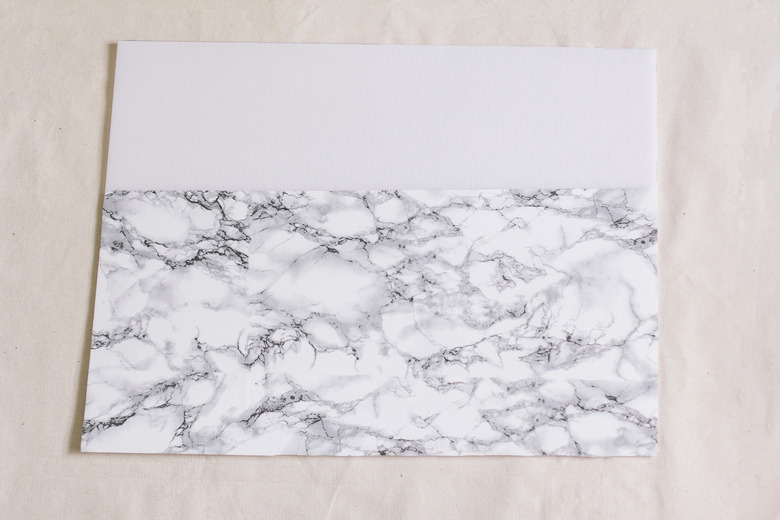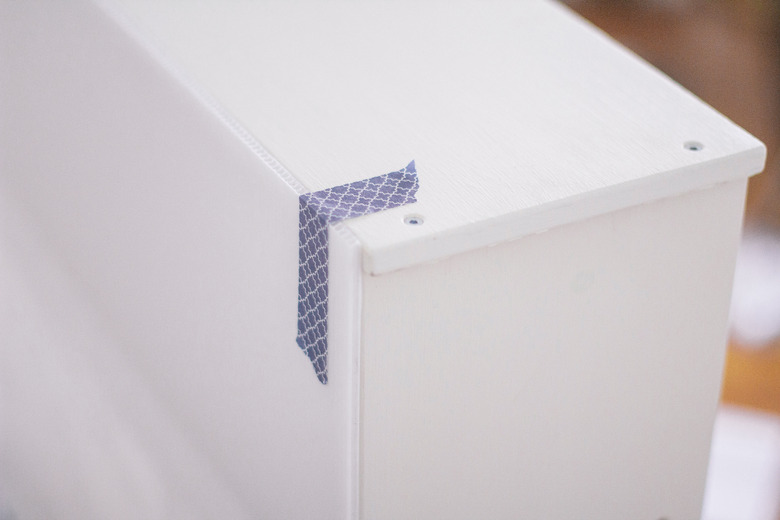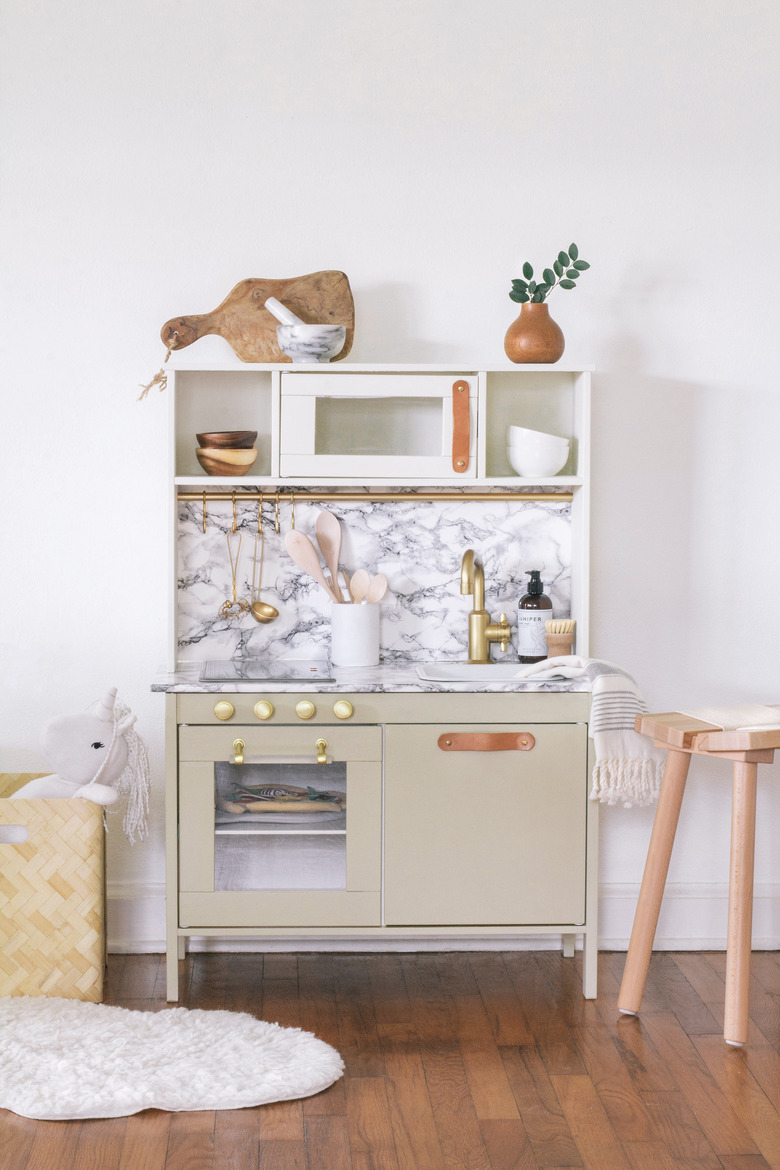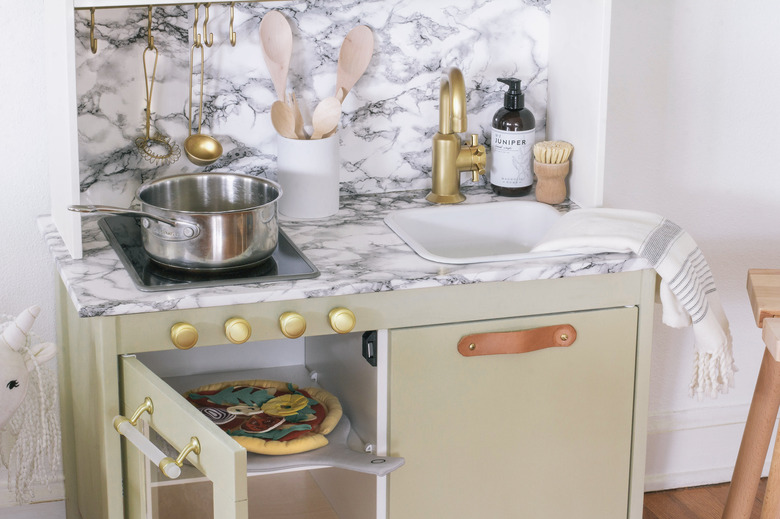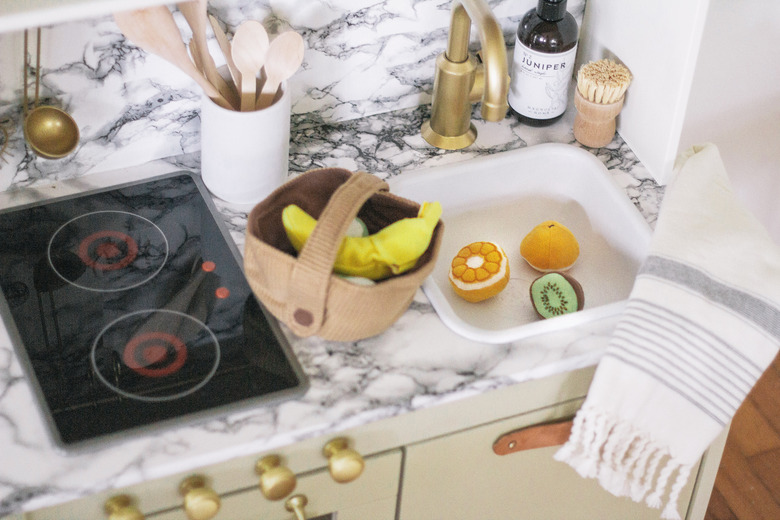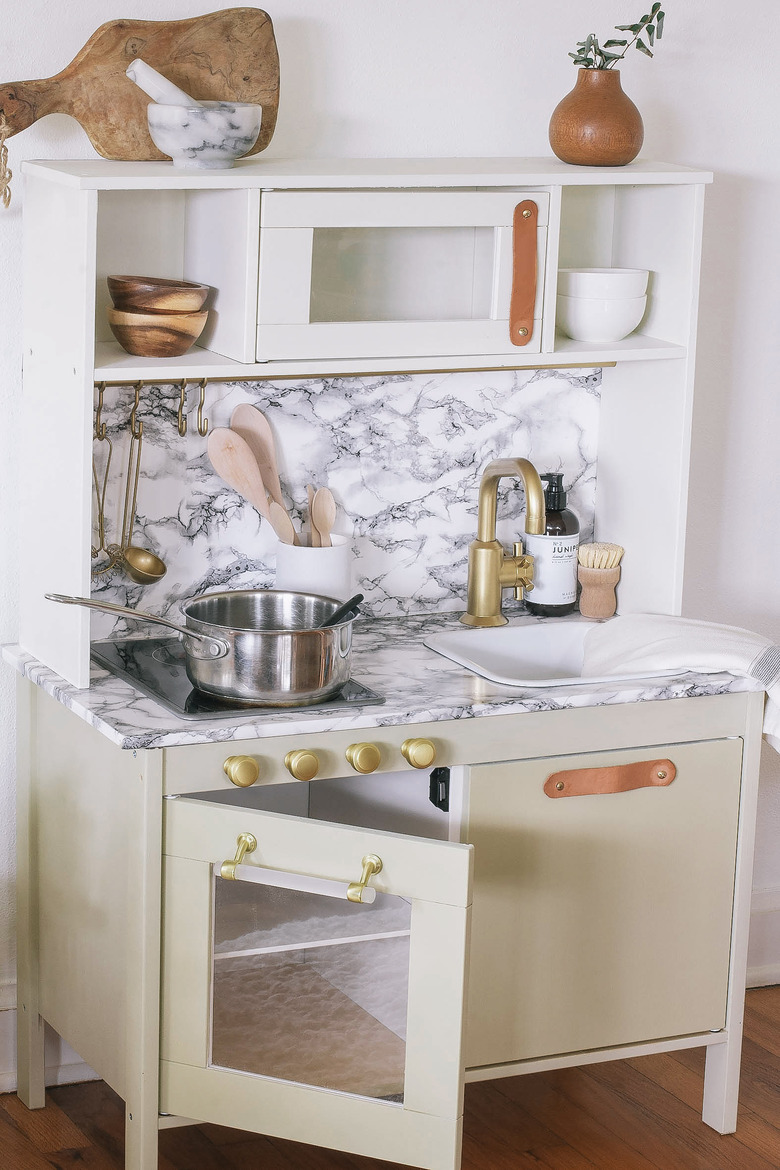Ready To Be Charmed? This IKEA Play Kitchen Hack Uses "Marble"
We may receive a commission on purchases made from links.
Have little ones that love to "help" in the kitchen? Give your tiny chefs their own cooking space to get creative and whip up some gourmet concoctions. We love the Duktig play kitchen from IKEA because it's just so darn hackable and easily tucks into the corner of a room. Drawing inspo from this gorgeous space by deVOL (they know a thing or two about kitchen design), we got to work making ours over with of-the-moment greige cabinetry, marble countertops with dramatic veining, and a dreamy slab backsplash. Paired with brass and leather accents, we can't help but want to cook alongside our budding foodies in this small but stylish kitchen!
Things Needed
-
Medium-grit sandpaper
-
Clean cloth
-
Painter's tape
-
Newspaper
-
Flat paintbrush or foam roller brush
-
Utility knife
-
Credit card or scraping tool
-
Powder drill
-
Brass & frosted glass drawer pull, 5 1/16 inch
-
Brass cabinet knobs, 1 3/16 inch, (4)
-
Leather cabinet pulls, 6 inch, (2)
Step 1
If you haven't already assembled your play kitchen, it's best to paint before assembly. If yours is already assembled, remove the doors, sink, and stove to make painting easier.
Use the assembly guide to identify all of the pieces you want to paint, and start by sanding them down, vigorously enough to remove the glossy sheen. This will help the paint adhere better and prevent chipping or peeling in the future. Wipe off any sanding dust with a clean cloth.
Step 2
Tape off the doors with newspaper to protect them from paint. Paint the cabinets and doors in your desired paint colors. We used chalk paint (oat on the bottom and linen on the top) because it has excellent adhesion, particularly to the super glossy surfaces that IKEA is known for. (Pssst ... have you seen our comprehensive chalk paint guide?) We used a flat paintbrush, but a foam roller would give a smoother finish. You'll get the best results by painting several thin coats, allowing at least 30 minutes of drying time between coats.
Step 3
While the paint is drying on the cabinets and doors, spray paint the sink (we used white), as well as the faucet, rod, and hooks (we used brass). We also painted the metal play kitchen utensils brass, too. Painting several light coats works best to prevent drips and streaks.
Step 4
Once all of the painted pieces have dried thoroughly (preferably overnight), it's highly recommended that you seal all of that painted goodness in with a clear protective topcoat. Seriously, with the amount of activity these pieces will endure, paint chipping is inevitable without sealing. We sprayed the cabinets and doors with two coats of sealant, and since painted plastic is notorious for chipping, we erred on the side of overly cautious by spraying four coats on the sink, faucet, rod, and hooks.
Step 5
Place the countertop piece on top of the contact paper, and trace around the stove and sink openings.
Use a utility knife to cut out the holes for the sink and stove. Then line up the holes on the contact paper with the holes on the countertop. Peel back the paper backing and adhere the contact paper at one end. Then press as you peel, stopping every few inches to scrape the surface with a credit card to remove any air bubbles. Be sure to cover all the edges of the counters, and then trim off any excess.
Use a utility knife to cut a small x-shaped incision in all the holes pre-drilled for screws.
Step 6
Assemble the kitchen, and install the cabinet hardware. We opted not to use the handles that came with the kitchen, and instead used this brass and frosted glass handle and these brass knobs for the stove. The frosted handle worked perfectly with the holes that were already pre-drilled, but we did have to drill holes for the four knobs.
The brass hardware and slanted handle kind of give off the vibes of a fancy French Lacanche range, no?
For the cabinet and microwave doors, we used leather pulls, which also worked well with the pre-existing holes. Their modern edge balances out the brass beautifully.
Step 7
To create a backsplash, cut a piece of foam or poster board to the size of the opening behind the sink and stove. Cover the portion that will be visible with marble contact paper.
Glue the poster board along the edges in the back of the kitchen, and tape it in place with painter's tape until the glue dries.
Now you're all set to accessorize your kitchen with fun play food, cooking utensils, and cookware.
We can't help but wonder what kinds of recipes your young chefs will create!
